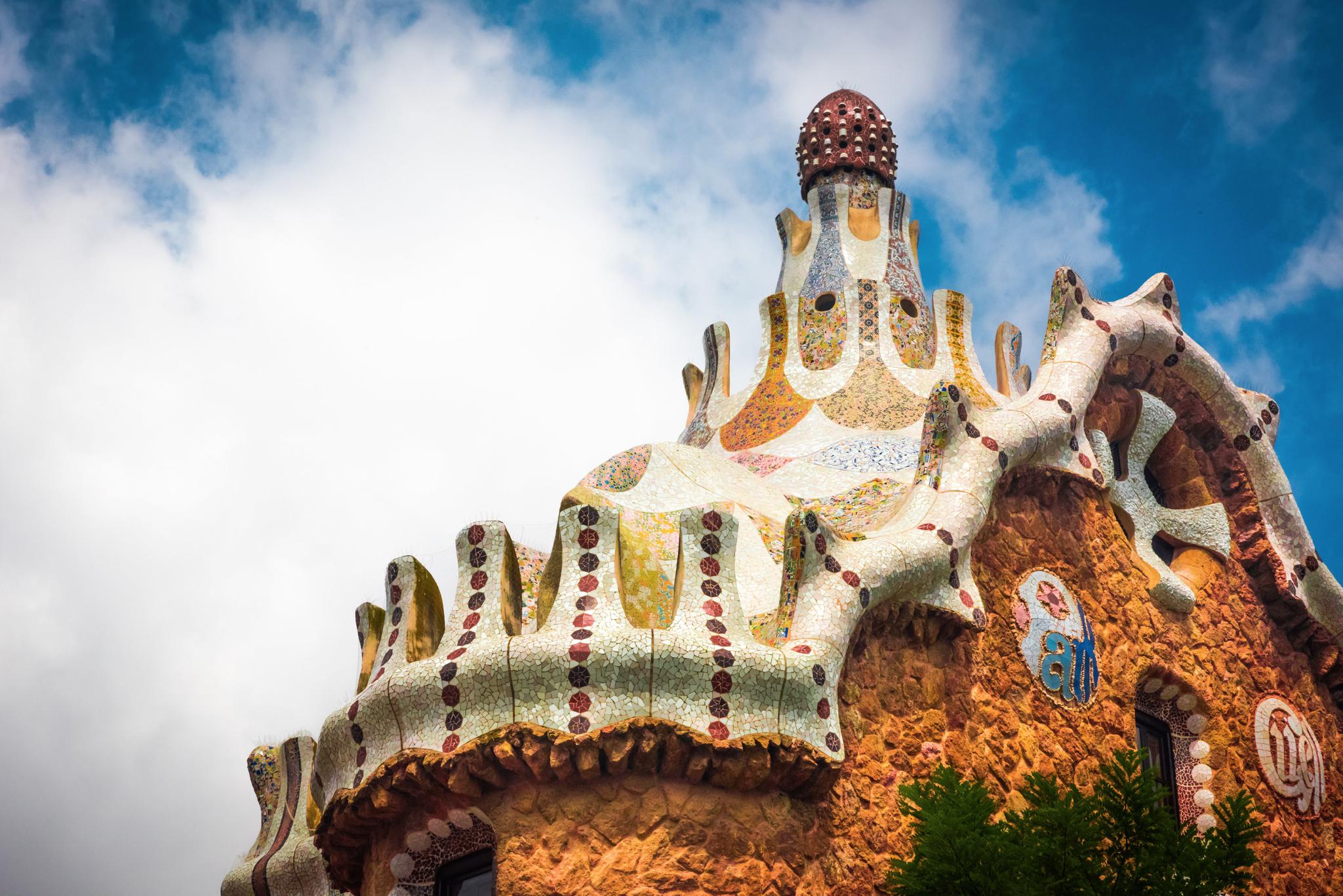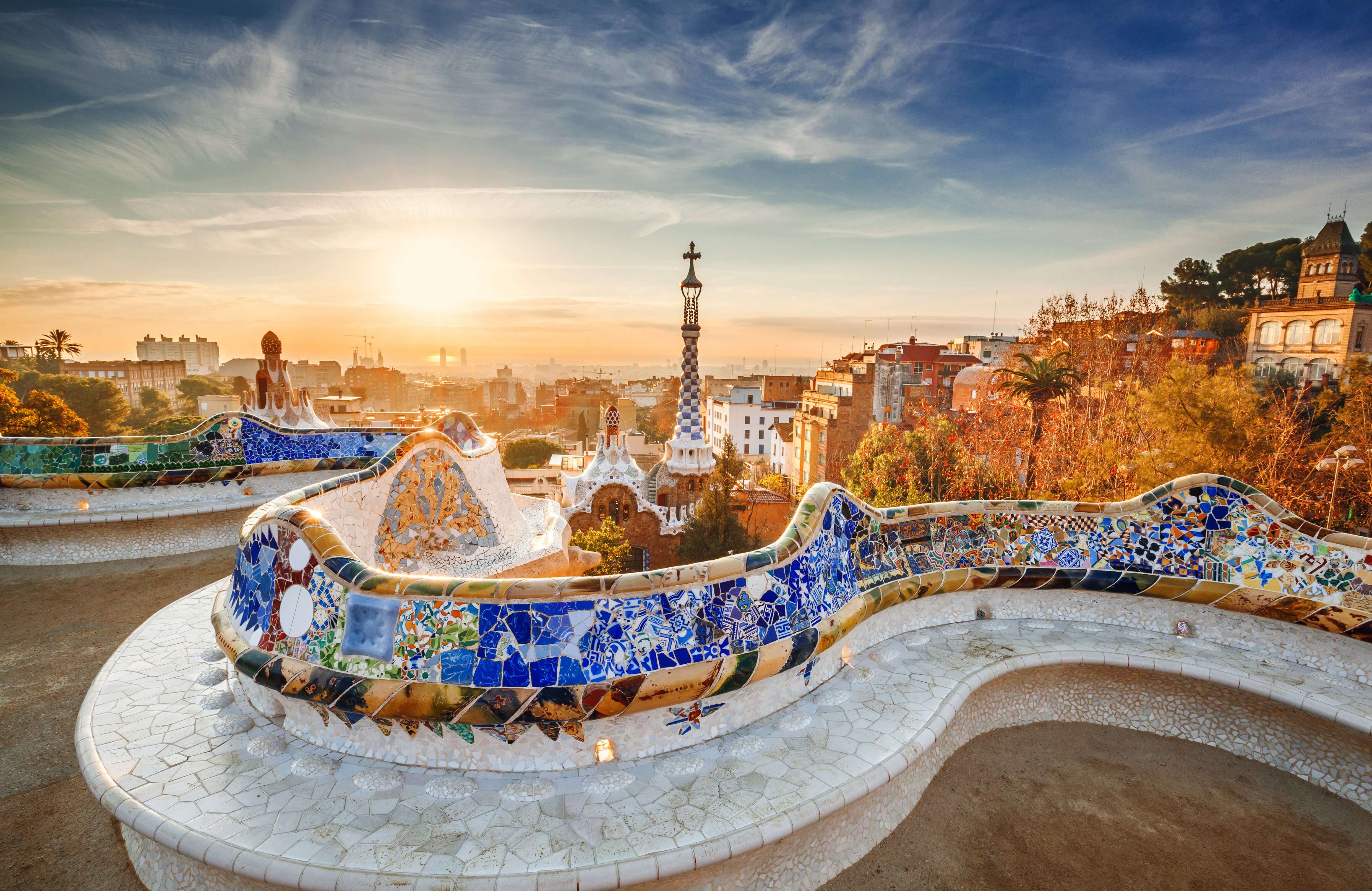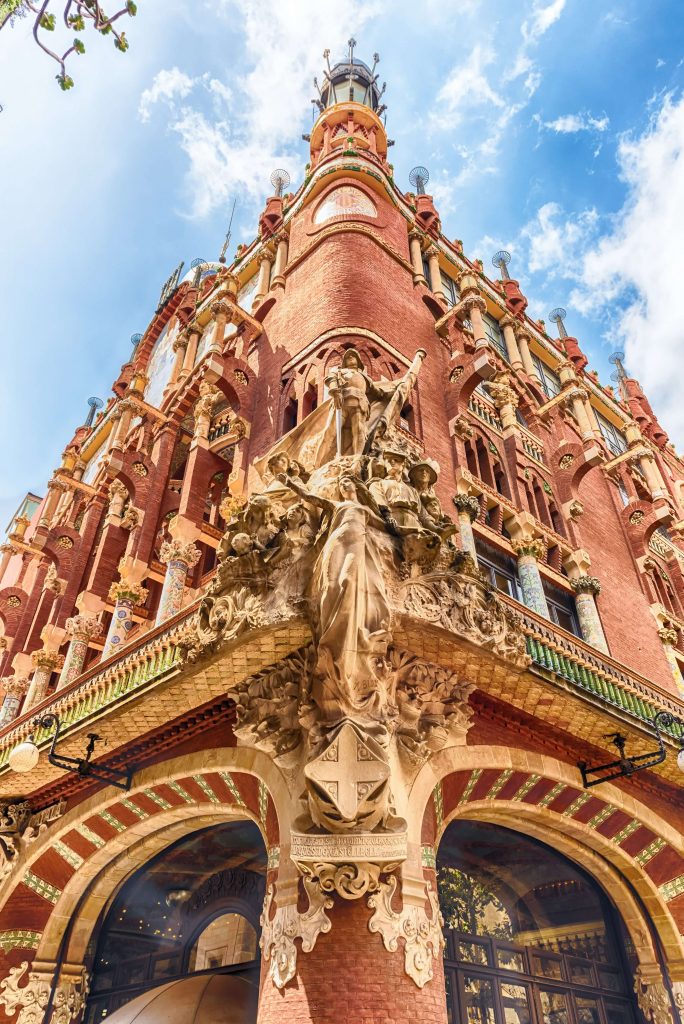Spain Art & Culture, Food & Wine
Catalonia Culture Trip: Barcelona’s Art, Architecture and Cuisine


Art, architecture, tapas and cava are the cornerstones of Barcelona and its scenic wine country, writes Barry Stone
There are two kinds of people in the crowd you’ll always find milling about on the pavement outside architect Antoni Gaudí’s masterpiece Casa Batlló on Barcelona’s Passeig de Gràcia, the grand boulevard that bisects the city’s sassiest shopping district: those still deciding whether to pay its €24.50 admission price, and those already queuing for tickets.
Me? I’m happily standing in line and, like everyone else, unable to take my eyes off the riotous facade rising above. Oval-shaped windows set in local Montjuic sandstone, balconies so ornate, so curvaceous they’re positively lyrical, its outer skin a kaleidoscope of broken mosaic tiles, a roof line evoking the curve of a dragon’s backbone. Curves, curves and yet more curves. Well, Gaudí hated ‘straight’.
Inside there’s the stained glass in the Noble Floor, the inner ceramic-clad light well, and that gorgeous loft with its 60 U-shaped catenary arches that surely make it the world’s most over-engineered storage space.
Casa Batlló was already a private residence when it was given the makeover of the century by Gaudí in 1904, and is just minutes away from his other must-see triumph Casa Milà (1906-1912), a mix of apartments and other residences that can’t decide if it’s building or sculpture with its wave-like stone exterior, outrageous rooftop chimneys, and inside, a time-machine: a preserved, furnished apartment that will immerse you in the day-to-day of early 20th-century bourgeois Spanish life.
People flock to Barcelona from around the world because examples of Gaudí’s fanciful world are everywhere here, including the Sagrada Familia, his still-unfinished Basilica and one-off triumphal interpretation of the Gothic tradition. Begun in 1882 and is due for completion (maybe) in 2026, it is a product of his observations in nature coupled with an indomitable faith. No wonder this deft practitioner of Catalan Modernism had the nickname “God’s Architect”.
Gaudí is so fêted you’d be forgiven for thinking his work is all there is to see here. But this was never just his city.

Together with Paris, Barcelona was the beating heart of the Art Nouveau movement, an ornamental approach to architecture that flourished from 1890 to 1910 and includes what must surely be the world’s most beautiful concert hall, the Palau de la Música Catalana (1905-1908), designed by that other great Catalan architect, Lluís Domènech i Montaner. You must not leave Barcelona without seeing this.
Spread across a plain on the northeast coast of the Iberian Peninsula overlooking the Mediterranean Sea, Barcelona is the spiritual heart of Spain’s independent-minded Catalan people. It is a city of boulevards and promenades, a port city with a history of shipbuilding dating back to the 13th century, and a vibrant mix of historic neighbourhoods including the not-to-be-missed Barri Gòtic (Gothic) district.
It was here the city’s history began around 130BC when the Romans began to fortify the settlement they called Barcino, and which today includes the city’s most famous promenade, the 1.3 kilometre-long La Rambla.
Spain’s second-largest municipality might be big and bustling, but it’s far from daunting, its New York City-like grid pattern of wide, leafy streets making it easily navigable even for the first-timer (although keeping count of how many lefts and rights you’ve taken isn’t easy when there’s so much beauty to distract you).
And distractions are everywhere here including the Art Nouveau cast-iron street lamps on the Passeig de Lluís Companys, and the city’s 45-degree chamfered-corner buildings, their angled setbacks transforming intersections into open, breathable plazas.
You can’t even look down at its footpaths without being distracted by their innovative panots, patterned 20 x 20cm tiles composed of stucco, concrete and mortar that began being laid in 1916 and now comprise around five million square metres of pavement.
There’s the Rajola tile, the Pedrera (designed by Gaudí – yes, he’s everywhere), the Flor de Barcelona and the B de Barcelona to name a few. Here the art isn’t just found in its buildings, galleries and museums. You get to walk on it, too.
Spaniards rightly love their wines, and some 50 kilometres from Barcelona lies the scenic Penedès wine country, a viticulture hotspot with a well-deserved reputation for the production of ‘new’ wines using imported grapes (an irony as the locals are traditionally suspicious of ‘foreign’ grapes).
Codorníu Winery is Spain’s oldest family-run business with records dating back to 1551, and is the country’s second-largest producer of cava (sparkling wine), what was long called champán here until French winemakers from the Champagne region took exception and started getting litigious.
If you come to Codorníu, don’t leave without taking a tour through its mind-boggling labyrinth of underground wine storage tunnels. Declared a Monument of National Historical Artistic Merit in 1976 by King Juan Carlos I, a subterranean world of vaulted brick ceilings spanning more than 30 kilometres over four levels and containing 90 million bottles of precious, sparkling cava.
Back in the city, what is cava without extraordinary food? But where does one find Spain’s renowned tapas and other gourmet offerings?
Look no further than Lasarte or ABaC (with its three Michelin stars); the culinary institution that is Los Caracoles – operated since 1835 by four generations of the Bofarull family – or at Els Quatre Gats, once the favoured haunt of a young Pablo Picasso and the space that housed his first exhibition.
Another famous Barcelona artist was Salvador Dalí, and it turns out we have something in common. We’ve both stayed at El Palace Hotel, the city’s last word in opulence ever since it opened in 1919 as the Hotel Ritz, although I can’t say I ever lived there for months on end, had a stuffed white horse delivered to my suite, or had myself photographed with models in its Versailles-like interior.
But I can say I know what it’s like to walk out of its front doors onto the Gran Via de les Corts Catalanes on a sunny Barcelona morning. I know how it feels to have until 11am to finish a leisurely breakfast, to drink a glass of cava at the tapas bar on its rooftop terrace, and look out across the city skyline to the evolving splendour of Gaudí’s Sagrada Familia. And that’s more than enough for me.
Latest Articles
Don't miss the latest from Luxury Travel
